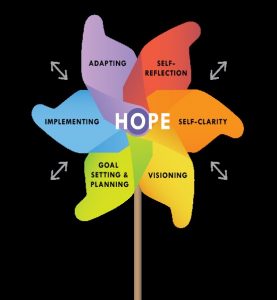In this series, Associate Professor Aditi Padhi from School of Art and Architecture explores the idea and phenomena of HOPE through the lens of Architecture, built- environment, cityscapes, cultural artifact and the individual.

Ref: https://hope-action.com/
Hope, literally meaning to await some occurrence or outcome,” is perhaps unequivocal the most positive word despite its dreary connotations of anticipation and longing. Its unequalled in its universal appeal and one may argue that the hope theory may actually be the blueprint for the future.
Human beings have always built in response to a threat whether it’s environmental, climatic or from their own species. Back when Oscar Newman was the bible for my 2001 dissertation, eventually influencing my thesis, my master’s education and two decades of service to the notion of defensible spaces.

Author: Self
The Architecture of fear of defensible spaces is an adrenaline-fueled exploration with perhaps a healthy acceptance of human frailties vis-a vis survival instinct and an unhealthy deployment of segregation, isolation and over indulgence of control. In direct response to fear-based segregation, surveillance and subversion of human exploratory instinct – hope is often found in spaces of awareness, connections and communications.
Tribal phenomena of identity and or culture plays a significant role in the use and perception of aggregation spaces that: serve psychological well- being, provide for basic needs in a fair and democratic process and inclusivity and accessibility to All. Hope is created in the accepting and unbiased environments of nature that has a guiding moral and intelligent principle instead of conquest and oppression developed to cope with scarcity during evolution.
Traditional religion lore speaks of ‘Brahma’ the creator becoming enamored with the resilience and replenishment of ‘Prakriti’ that he hoped to possess her and control her as a response to always having everything and never needing anything. Traditional architecture addressed these anxieties and fears of existence by studying the geometries found in nature and living in symbiosis with the sustainable systems around.
Historically, sacred geometry provided for psychological appeasement and esoteric ideals like self-healing/ self -sustenance. A recent revival in sustainability is really the awakening of the wisdom of our ancestors adapted to modern times.
Is our future hopeful? As hope is fundamental to survival of our species
